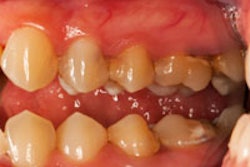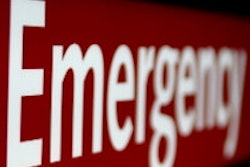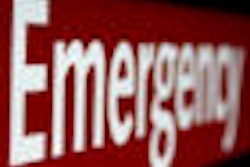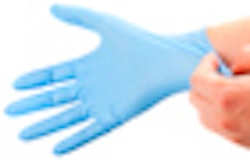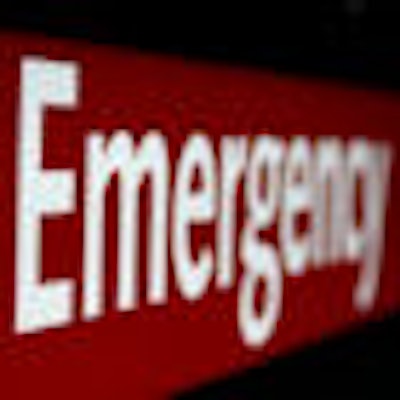
Patients visiting hospital emergency departments (EDs) in the U.S. because of periodontal conditions were charged about $33.3 million by the hospitals for treating these conditions on an emergency basis in 2006, according to a new study (Journal of Periodontology [JOP], June 2011, Vol. 82:6, pp. 809-819).
Patients with medical conditions and those who ignore regular dental care have a higher chance of visiting emergency departments, the study authors noted. However, little is known about nationwide estimates of hospital-based ED visits caused by periodontal conditions.
They wanted to determine the frequency of ED visits related to periodontal conditions and identify the risk factors for hospitalization during those visits.
Researchers from Harvard University and the University of Iowa looked at the Nationwide Emergency Department Sample (NEDS) -- one of the hospital discharge datasets of the Healthcare Cost and Utilization Project (HCUP) -- for 2006 and selected patients who visited the ED with a primary diagnosis of acute gingivitis, chronic gingivitis, gingival recession, aggressive or acute periodontitis, chronic periodontitis, periodontosis, accretions, other specified periodontal disease, or unspecified gingival and periodontal disease.
“Periodontal disease is not life-threatening and should not lead to an ED visit.”
— Christopher Okunseri, BDS
The NEDS is the largest all-payor ED database providing information on 26 million records for ED visits from more than 950 hospitals, and has been designed to enable outcome analyses of ED visits and use patterns across the U.S., the authors noted.
Some of the variables of interest in the study included the patient's age, gender, primary and secondary diagnoses based on International Classification of Diseases (ICD-9-CM) codes, insurance status, and hospital charges for ED services rendered.
From more than 120.03 million hospital-based ED visits, 85,039 had a mean charge per visit of $456.31, and total charges close to $33.3 million were primarily attributed to gingival and periodontal conditions, the researchers reported.
They also found that close to 36% and 33% of all visits occurred among the lowest income group and uninsured population, respectively, while the total ED charges for those covered by Medicare was nearly $4.95 million, $9.14 million for Medicaid patients, $8.01 million for patients with private insurance, $920,000 for those with other insurance plans, and $10.06 million for the uninsured.
More than 94 % of visits were discharged routinely from the ED, while inpatient admission to the same hospital was required for 1,167 visits.
Patients with comorbid conditions such as congestive heart failure, valvular disease, hypertension, paralysis, neurologic disorders, chronic pulmonary disease, hypothyroidism, liver disease, AIDS, coagulopathy, deficiency anemia, obesity, alcohol abuse, or drug abuse and patients with a primary diagnosis of acute or aggressive periodontitis were associated with significantly higher odds of being hospitalized during an ED visit for periodontal conditions.
"Estimates from the NEDS suggest that a total of 85,039 hospital-based ED visits had a primary diagnosis for periodontal conditions," the authors concluded. "However, when interpreting these findings, it is important to keep the limitations inherent to hospital discharge datasets in perspective."
These findings provide some insight into the financial burden of caring for patients with periodontal disease in the ED, noted Christopher Okunseri, BDS, from the Marquette University School of Dentistry, who has done similar research (Journal of the American Dental Association, May 2011, Vol. 142:5, pp. 540-550).
Dr. Okunseri and his colleagues looked at Wisconsin Medicaid enrollees' use of EDs and physicians' offices for treatment of nontraumatic dental conditions and found that improved access to dental care for Medicaid enrollees that is best managed by dental care providers should reduce the rates of recurrent visits to EDs and physicians' offices for these conditions.
Talking about the findings of the JOP study, Dr. Okunseri said that they are consistent with prior results that document the magnitude of ED use for nontraumatic dental condition visits, and he was not surprised at the findings and the fact that the expense involved goes into millions of dollars.
The article is unique in that it is one of the few to specifically investigate the use of EDs for treatment of periodontal disease, he added.
"For the most part, periodontal disease is not life-threatening and should not lead to an ED visit," Dr. Okunseri said. "This article clearly identifies a dental disease that can be best managed by dentists rather than physicians."
The study serves as a baseline for future studies that will document the financial burden on the healthcare system of treating periodontal disease in EDs, he concluded.




